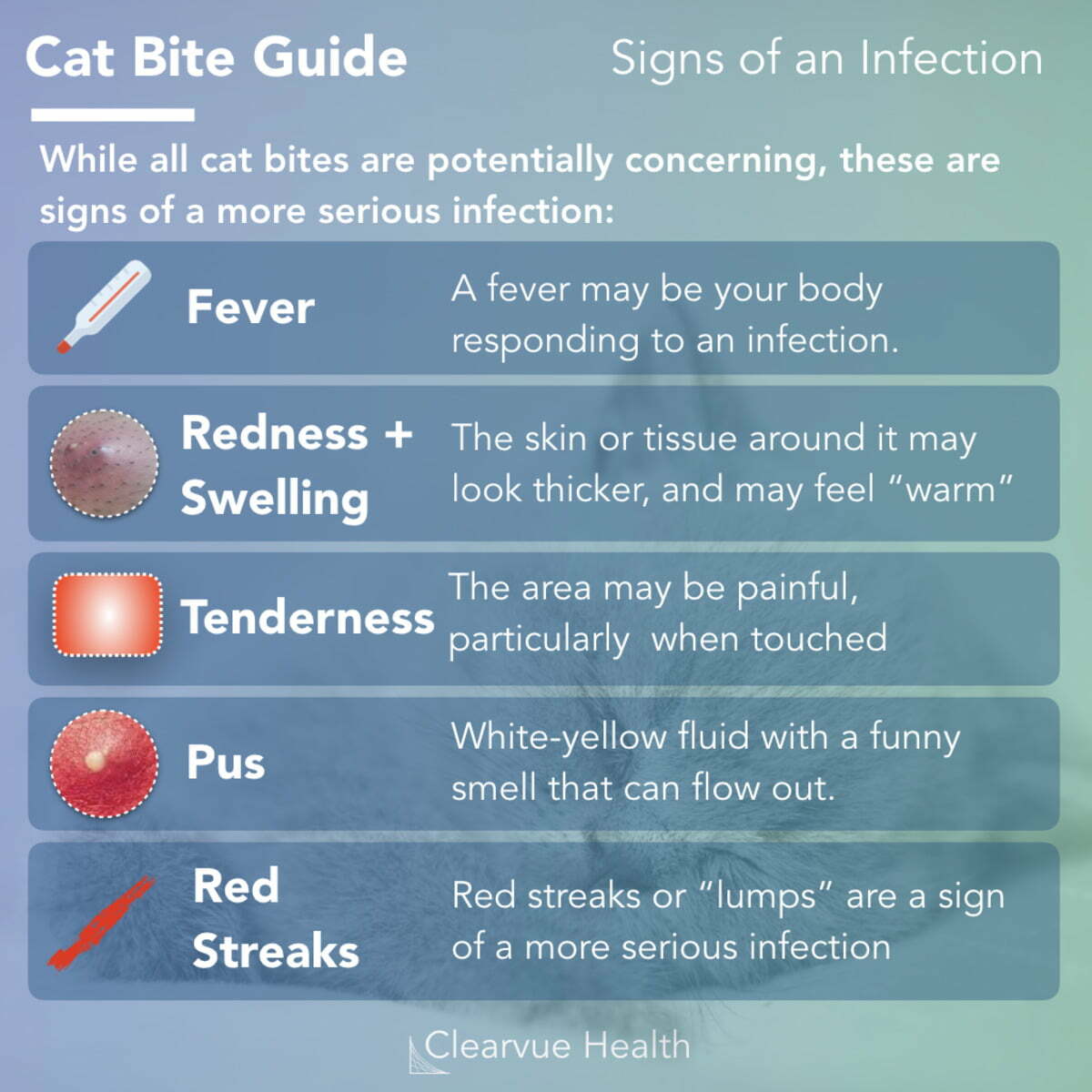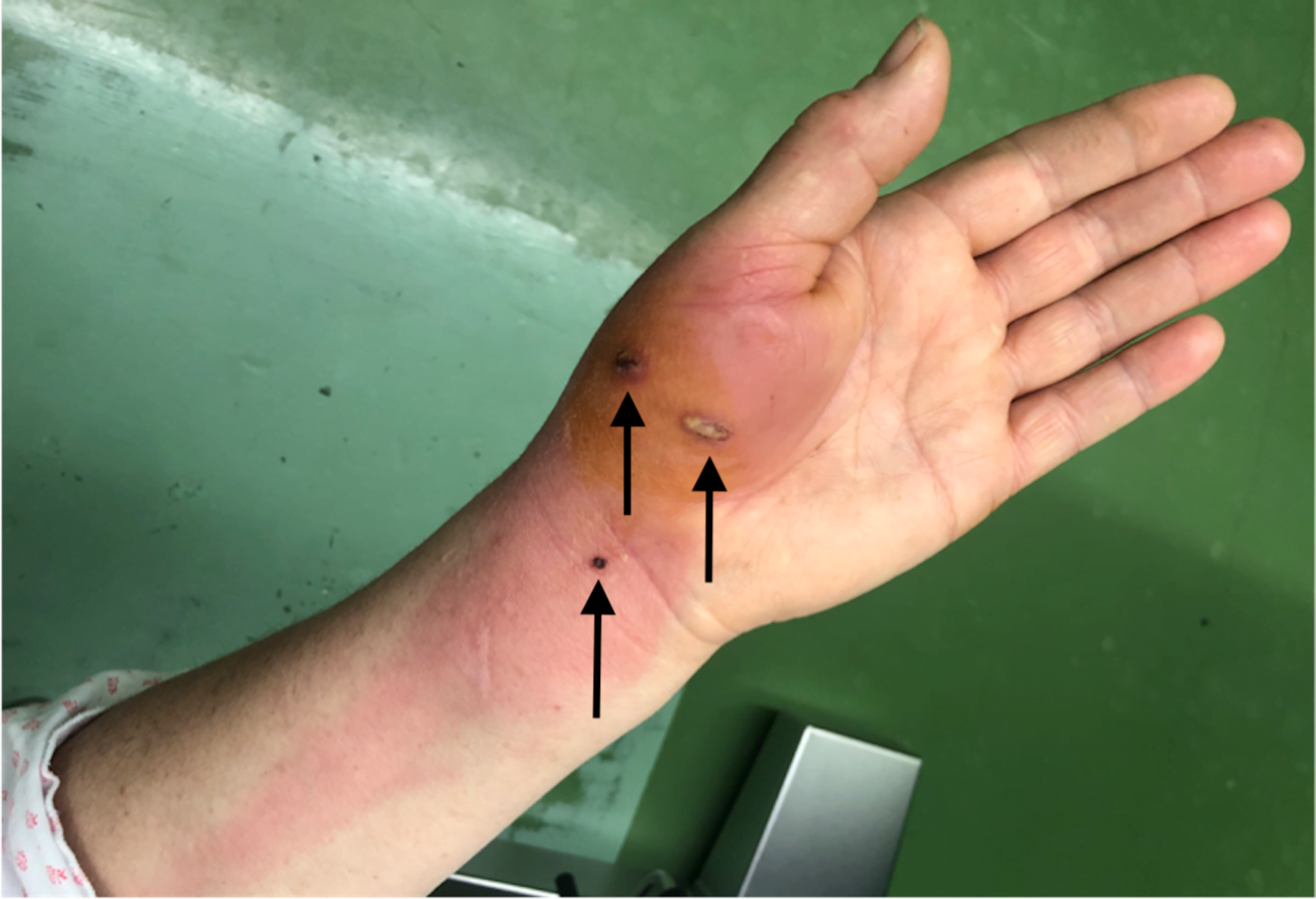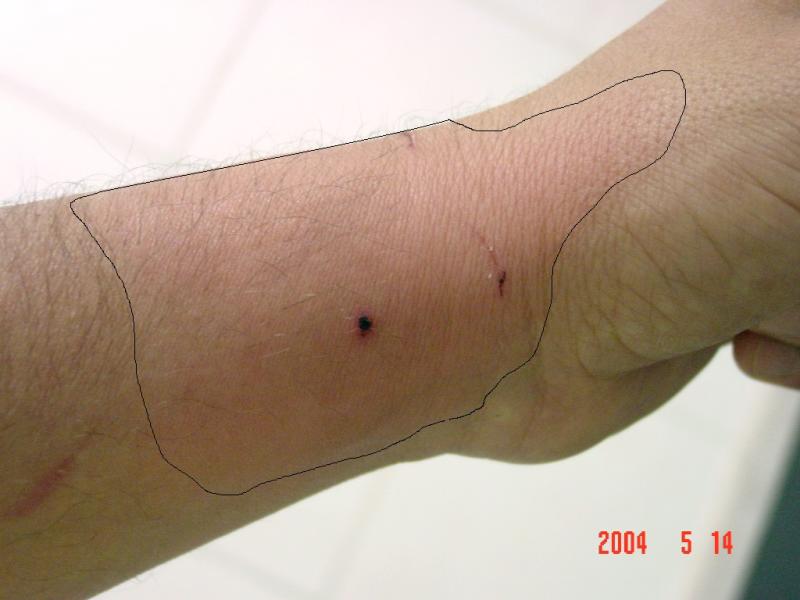Cat Bite Infection- Is It Life-Threatening?
Though cats are all cute and cuddly, cat bite infections might not be suitable for you. Cats often bite when they feel threatened. When any cat bites you initially, it might not seem a big deal, and it may seem fantastic when you are playing with them, but this bite may have significant side effects on your health.
Cats carry numerous bacterias in the mouth, which are highly capable of leading to infections. Thus cat bite infection is possible. Though cats in your house are vaccinated against severe diseases like rabies, playing with stray cats who are not vaccinated can carry a higher risk of certain extreme conditions.
Not only this, but the cat bite infection rate is also high. According to a research review from 2018, researchers noted that infection occurred in nearly 50% of cat bites in kids. Approximately 400,000 cat bites are pointed out to happen every year in the United States.
Cat bite infection is not only painful, but it also becomes discolored or red and swollen. If you ignore it, Cat bite infection may disperse to other body parts, leading to a condition known as septicemia or blood poisoning. This condition is dangerous and requires hospitalization. In rare cases, cat bite infections may be highly fatal.
Cat Bite Infection- Is It Dangerous?

Chances of cat bite infection often vary. A quick estimate of the infection rate of bites ranges from 20 to 80%. A few estimates suggest that nearly 50% of children may develop an infection when bitten by cats. Due to such higher estimate ranges, one should always watch out for inception signs when a cat bites.
Not only infection, sometimes based on the severity of the bite, some complications may also occur, such as:
- Damage to the nerves.
- Tendon damages, especially in your hands.
- A broken piece of tooth may get stuck inside the wound once the cat bites.
- The visible scar on the spot where the cat had bitten.
What if the cat bite breaks your skin?
If you have a cat, you must have noted it has sharp and narrow teeth, which are pretty similar to a hypodermic needle and can easily pierce your soft skin. When the cat bites a person, it leaves a puncture wound.
This wound may later trap several bacterias inside the deep tissues after the surface of the injury heals. Puncture wounds are harder to clean or sanitize, thus resulting in an invasive infection from a cat bite. Now you know how severe a cat bite infection could be.
Various infections result from cat bites based on the microorganisms that act on the wound.
Cat Bite Infection- Types

As per various researches and studies over cat bite infection, it is clear that several microorganisms are leading to disease after a bite. These include the following:
1. Pasteurella Multocidea
Nearly 70 to 90% of cats contain Pasteurella multocida, as per research by Cornell University. About 50-80% of cat bites develop an infection severe enough to need quick medical attention. After 1 or 2 days of the bite, you might start to feel specific symptoms such as swelling, inflammation, and pain near the wound.
Some studies conducted previously on the same indicates that this microorganism may frequently lead to abscesses and cellulitis after a bite.
In sporadic cases, it has been noted that this bacteria might spread to other body parts through the bloodstream, causing sepsis. This further leads to an infection of the valves of the heart.
Anyone with pre-existing conditions related to the heart may be fatal and lead to respiratory infections, pneumonia, and bronchopneumonia. The majority of these conditions can be treated by taking antibiotics prescribed by the doctor.
2. Cat Scratch Disease
Cat bite infection can lead to cat scratch disease caused due to another bacteria known as Bartonella henselae. Cats can catch such conditions via blood transfusions, flea bites, or fights with infected cats. About 40% of cats contain this infection. If a cat bites or scratches anyone or licks an exposed wound, this bacteria will get transmitted to that person.
It may take anywhere between 3 to 14 days for the bite or scratch to display this cat bite infection signs.
Typically, this disease will resolve independently without needing treatment in 2 to 3 months. Still, if you show persistent or severe symptoms after the bite, you may want to take antibiotics as per your doctor’s suggestions.
Signs of cat bite infection or scratch disease in people
A person might notice a few symptoms in about 1 to 3 weeks after catching the infection. Some signs include tender and enlarged lymph nodes and fever. Less frequent symptoms may consist of muscle pain and eye infections.
Signs of Bartonella henselae in cats
Most cats that have this type of infection or bacteria within them show no signs of infection. However, some cats might encounter a fever that lasts for as long as 2 or 3 days. Some severe symptoms resulting from this may include red eyes, vomiting, tiredness, swollen lymph nodes, and low appetite.
Treatment is usually not required unless your cat becomes very ill. It would help if you allowed your cat to deal with the infection and handle it without interfering.
3. Rabies
You have most probably heard of this neurological disease that spreads through an animal bite containing the infection. Due to various vaccination programs for domesticated animals, rabies is highly rare in the United States. However, rabes might still be prevalent in other animals or wild animals with no vaccination.
Although most domesticated animals, including cats, have had the rabies vaccination, most likely, if you get bitten by an unvaccinated animal or stray cat, you could get rabies infection.
The Centers of disease control and prevention reveal that if someone encounters a cat bite from a cat that seemed healthy at that point and can spot its owner, the owner must confine their cat for at least ten days and see any signs of symptoms. If no symptoms are spotted, the bitten person will not require anti-rabies prophylaxis.
It is noted that no person has caught rabies from cats that were quarantined in the United States. Suppose the cat seemed ill during the bite or later became sick in the ten-day quarantine period. It is advised that you seek medical advice about whether you need anti-rabies prophylaxis or not based on your condition.
Signs in people
Symptoms of rabies may develop within a few days to months after catching the infection. When you notice any appearance of signs, it is usually too late to receive any treatment.
Following a bite from an animal with rabies, a person must wash the injury with soap and water and speak to a healthcare expert about what should be done next.
Signs in cats
A cat having rabies will encounter sudden variations in its behavior, besides increasing paralysis. It might also grow anxious, pant, restless, and attack other people or animals it discovers.
Animals having rabies will die in a span of a few days once the symptoms start to appear.
4. Sporotrichosis
This infection occurs due to fungus. It mainly spreads through the environment if you have an open wound on your skin. However, this may also spread through a cat bite infection. As per CDC, most cases only affect the skin and are not fatal. The standard treatment for this condition is getting an antifungal medication by the name Itraconazole. A person is required to take this medicine for as much as 3 to 6 months.
Suppose this infection has affected your joints, lungs, central nervous system, or bones. In that case, you will intravenously receive Amphotericin B. If the fungus has spread highly and affected your lungs, doctors may perform surgery to eliminate this cat bite infection.
Signs in cats
Cats might not show symptoms of illness. However, they may acquire small, bleeding wounds that transform into raised lumps.
Signs in people
If the fungus starts spreading on the skin, a person will see a small pink, red, or purple lump that can develop 1–12 weeks following the exposure. The bump will ultimately grow more extensive and appear similar to an exposed sore or ulcer. More spots may appear near the first bump later on.
If the fungus attacks the lungs, a person might encounter symptoms such as coughing, fever, chest pain, and shortness of breath.
Is there a first aid for cat bite infection?

According to CDC, warm water and soap are the best options to wash your wound due to scratches or bite from cats. If you experience a bite from a pet that seems in good health and is immunized or the pet is domestic, you must wash the wind using water and soap for 5 minutes at least and look for infection signs.
For deeper animal bites, you must apply pressure using a clean towel or bandage to limit the bleeding. The next step involves:
- Clean the wound with soap and water for at least 5 minutes, limit scrubbing as this may lead to severe bruising.
- Dry the injury or scratch and close with a sterilized dressing.
- Call a good healthcare expert for direction about whether or not they need further treatment.
It is vital to note that the person must avoid implementing tape or butterfly bandages, as this may confine harmful bacteria within the wound, further worsening the condition.
Signs Of Infections To Note

if your cat becomes infected as a result of bacteria, it may show specific symptoms mentioned below:
- Swelling
- Pain
- Inflammation
- Skin discoloration or redness around the wound.
- Fluid or pus leaking from the wound
- warmth
As per reports by the American Society for Surgery of the Hand, symptoms an infection might be growing worse or increasing include:
- Night sweats
- Shakes
- Tiredness or fatigue
- Swollen glands
- fever
- Streaks leading away from the bite
One must contact a healthcare expert if they think the cat bite infection is spreading further and needs medical supervision to be controlled.
Treatment for cat bite infection
The treatment for a cat bite infection may vary depending on rabies vaccination status and the location of the bite.
The world health organization reveals that a good treatment for cat bite infection often involves the following:
- Early therapeutic management, such as washing the wound.
- Prophylactic antibiotics to stop possible infection.
- Post-exposure rabies medication if the animal had rabies or there are chances of rabies.
- Treatment using tetanus vaccine if a person’s vaccination rank is not sufficient enough.
When to see a doctor
If the stray cat has led to the infection through its bite, the person must wash the wound using soap and water for 5 minutes at least and reach a doctor promptly.
A stray cat might carry rabies, which might need treatment with rabies post-exposure prophylaxis (PEP). The treatment approach is intended to sustain a person from receiving rabies after a suspected exposure.
If the cat bite infection comes from the bite of a domestic cat, the person might not even require to reach a doctor right away. They must, however, take specific measures to make sure the wound is washed immediately.
Once the wound is cleaned and dressed appropriately, the person must look for signs of infections and reach a doctor if the area appears red or infected or they encounter some unusual symptoms such as:
- headache
- fever
- swollen glands
- decreased appetite
- A general ill feeling.
Prevention for cat bite infection

The cat owner must be sure to take the pet to a vet for regular care. This can make sure that the cat is in good condition and check infectious diseases.
People must also take the subsequent steps to help limit getting bitten or hurt by a cat:
- be careful with unknown cats or other animals, and address them with proper care even if they seem to be friendly
- resist playing roughly with pets, as this may lead to them getting unfriendly and defensive toward you and other people
- Prevent rough play when your pet cat is juvenile to help control biting or scratching
- cut the nails of your pet cat with the assistance of a veterinarian if required
- teach kids to communicate courteously with cats and other animals and let the caregivers know if they have experienced a cat bite or a scratch.
Will the cat get harmed after biting a human?
There is no significant evidence to recommend a cat will receive any long-lasting ill consequences from biting any human, other than a few types of research that reveal that a cat may break a tooth after they bite someone.
A doctor will require to remove the tooth fragment carefully from the wound to treat it and assist in fast healing.
Outlook
With quick intervention, a maximum number of cat bite infections are easily treated using antibiotics or other medicines and attention.
Without treatment, a cat bite infection may lead to possibly serious difficulties or complications.

